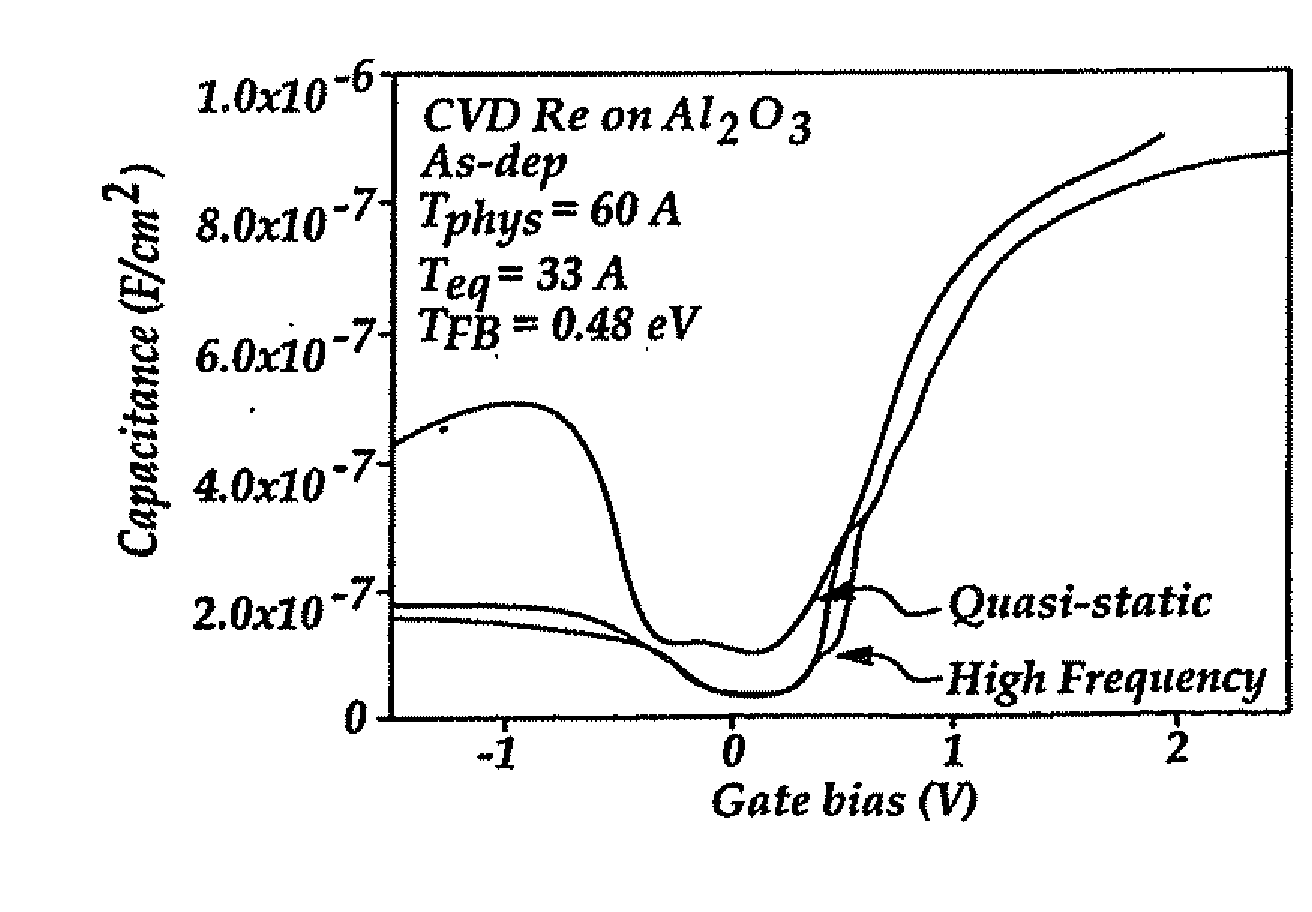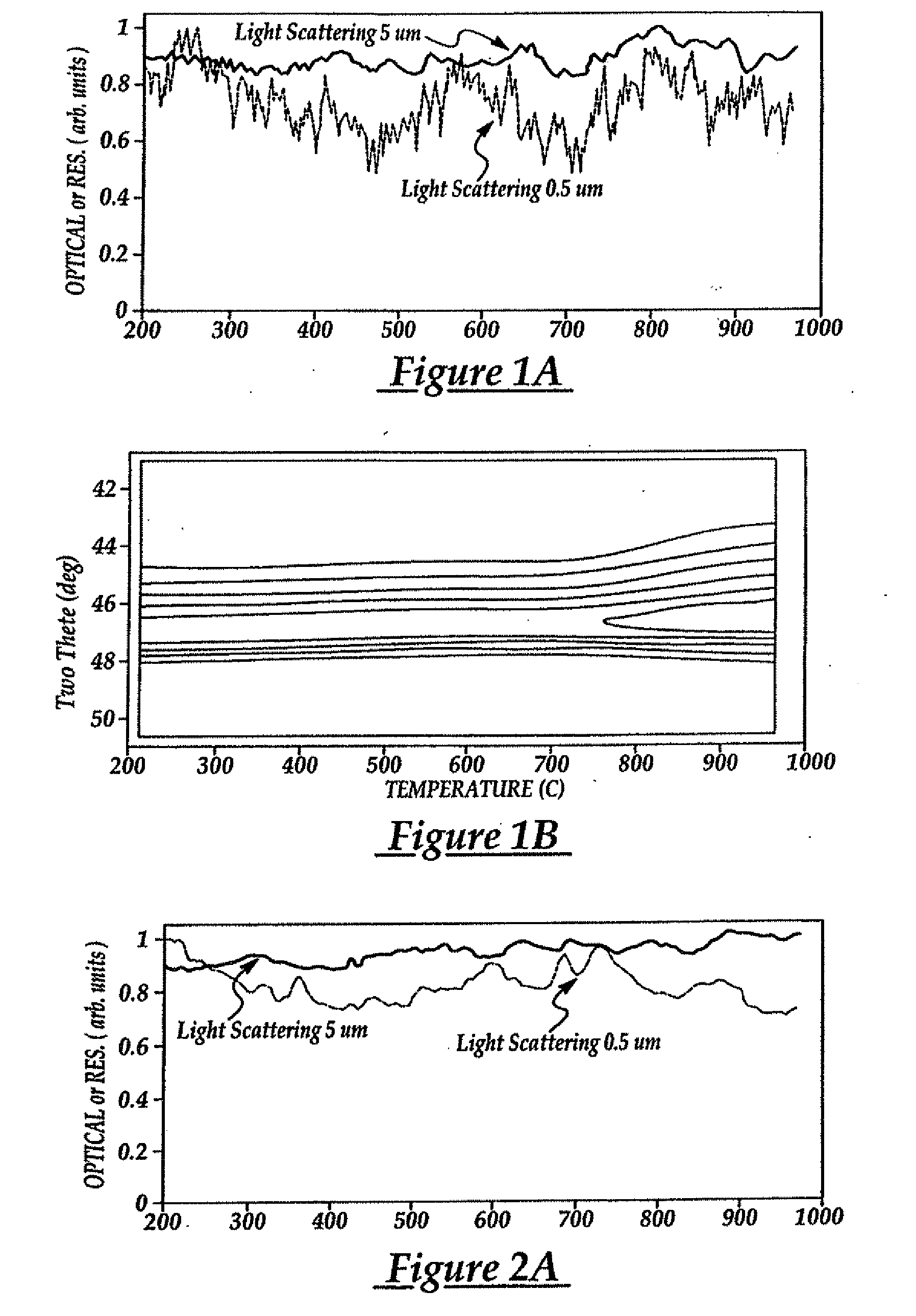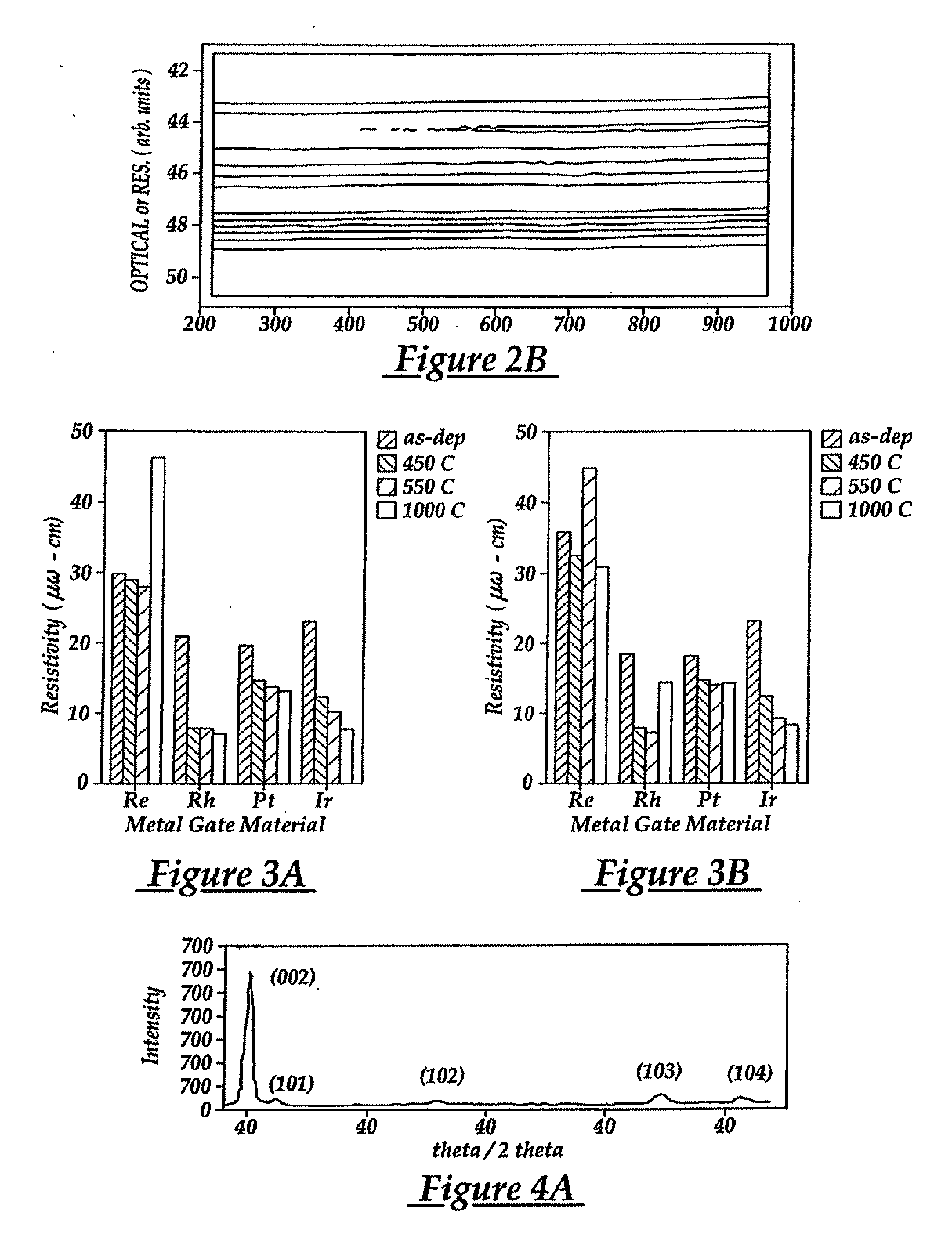High Temperature Processing Compatible Metal Gate Electrode For pFETS and Methods For Fabrication
a technology of metal gate electrode and high temperature processing, which is applied in the direction of transistors, electrical devices, semiconductor devices, etc., can solve the problems of halogen incorporation, high growth temperature, and damage to the gate dielectric field, and achieve the effect of reducing the number of halogen incorporation and high growth temperatur
- Summary
- Abstract
- Description
- Claims
- Application Information
AI Technical Summary
Benefits of technology
Problems solved by technology
Method used
Image
Examples
Embodiment Construction
[0034]The present invention discloses a method for fabricating a CMOS gate electrode incorporating Re, Rh, Pt, Ir or Ru metal. The work functions of these metals make them compatible with current p-FET requirements. The requirements of the p-FET gate material, presented below, are divided into four sections of deposition techniques, physical characterization, electrical characterization and integration.
Deposition Techniques
[0035]The Re electrode fabrication in the present invention is achieved by using a low temperature / low pressure CVD technique with Re2(CO)10 as the source material. Specifically, the method of the present invention comprises the steps of (a) depositing a uniform layer of Re directly onto a dielectric material such as an ultra-thin gate dielectric material, the dielectric material being positioned on a semiconductor substrate, the deposition is carried out by CVD using Re2(CO)10 as the source material under conditions which are sufficient to form the Re layer; and ...
PUM
| Property | Measurement | Unit |
|---|---|---|
| temperature | aaaaa | aaaaa |
| temperatures | aaaaa | aaaaa |
| total pressure | aaaaa | aaaaa |
Abstract
Description
Claims
Application Information
 Login to View More
Login to View More - R&D
- Intellectual Property
- Life Sciences
- Materials
- Tech Scout
- Unparalleled Data Quality
- Higher Quality Content
- 60% Fewer Hallucinations
Browse by: Latest US Patents, China's latest patents, Technical Efficacy Thesaurus, Application Domain, Technology Topic, Popular Technical Reports.
© 2025 PatSnap. All rights reserved.Legal|Privacy policy|Modern Slavery Act Transparency Statement|Sitemap|About US| Contact US: help@patsnap.com



